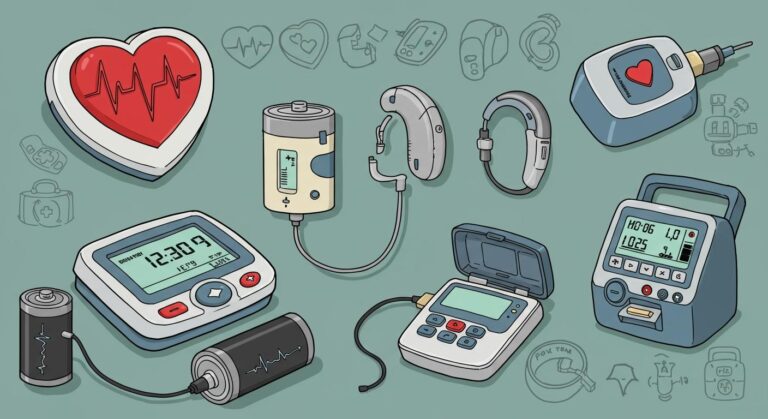
When you need reliable performance in cold environments, the low-temperature performance of NMC batteries vs lithium batteries makes NMC batteries the top choice. Their chemical composition, lithium nickel manganese cobalt oxide, ensures stable operation even at low temperatures. The unique design of these batteries minimizes energy loss while maintaining efficiency. With superior thermal stability, they deliver consistent power across a wide temperature range.
Key Takeaways
NMC batteries work better than other lithium batteries in cold weather. Their special chemicals help them give steady energy in low temperatures.
NMC batteries store a lot of energy, between 160-270 Wh/kg. This makes them great for small devices like electric cars and medical tools.
At -20°C, NMC batteries keep 60-70% of their power. They work well in freezing winters, which is important for robots and green energy systems.
Part 1: Why NMC Batteries Excel in Cold Weather

1.1 Chemical Composition of Lithium Nickel Manganese Cobalt Oxide
The chemical composition of lithium nickel manganese cobalt oxide (NMC) plays a pivotal role in its superior performance under cold conditions. The layered structure of NMC materials provides a wide diffusion pathway for lithium ions, even at low temperatures. This structure ensures efficient ion movement, reducing polarization and maintaining stable energy output. Compared to other lithium-ion batteries, such as LiFePO4 batteries, NMC batteries exhibit higher energy density, making them more suitable for applications requiring compact and lightweight designs.
The unique combination of nickel, manganese, and cobalt in the cathode material enhances the battery’s electrochemical properties. Nickel contributes to high energy density, manganese improves thermal stability, and cobalt ensures structural integrity. This synergy allows NMC batteries to deliver consistent performance across a broad temperature range, including sub-zero environments.
Tip: For industries like robotics, where reliable power is critical in cold climates, NMC batteries offer an ideal solution. Explore custom battery solutions for robotics here.
1.2 Thermal Stability and Energy Density in Low Temperatures
Thermal stability is a defining feature of NMC batteries, enabling them to operate efficiently in extreme cold. The high energy density of NMC batteries, ranging from 160 to 270 Wh/kg, ensures that they retain more usable energy compared to alternatives like LiFePO4 batteries, which have a lower energy density of 100 to 180 Wh/kg. This advantage becomes particularly significant in cold weather, where energy loss can impact performance.
The ability of NMC batteries to maintain a stable voltage platform, even at low temperatures, further enhances their reliability. For instance, while other lithium-ion batteries may experience significant voltage drops, NMC batteries sustain a consistent output, ensuring uninterrupted operation of devices. This makes them a preferred choice for applications like medical equipment, where stable power is non-negotiable. Learn more about medical battery solutions here.
1.3 High Discharge Capacity Retention Rate at Low Temperatures
One of the standout features of NMC batteries is their high discharge capacity retention rate in cold environments. At -20°C, NMC batteries retain approximately 60-70% of their capacity, outperforming LiFePO4 batteries, which often drop below 50%. This capability ensures that devices powered by NMC batteries remain operational even in harsh winter conditions.
The following table highlights the discharge capacity retention rates of different NMC battery types under low-temperature conditions:
Battery Type | Capacity Retention (%) | Cycles | Current (mA/g) |
|---|---|---|---|
NMC-Q | 90 | 300 | 200 |
NMC-S | 72 | 300 | 200 |
This data underscores the reliability of NMC batteries for applications requiring consistent power output, such as industrial equipment and renewable energy storage systems.
1.4 Smaller Increase in Internal Resistance at Low Temperatures
Low temperatures often lead to an increase in internal resistance in batteries, which can reduce their efficiency and output. However, NMC batteries exhibit a smaller increase in internal resistance compared to other lithium-ion chemistries. This characteristic minimizes energy loss and ensures better performance in cold weather.
The table below illustrates the reliability of NMC battery technology under extreme cold:
This minimal resistance increase allows NMC batteries to deliver consistent power, making them ideal for applications like security systems in cold climates.
Part 2: Low-Temperature Performance of NMC Batteries vs Lithium Batteries

2.1 Comparison with Lithium Iron Phosphate (LiFePO4) Batteries
When comparing NMC batteries to LiFePO4 batteries in cold environments, you’ll notice distinct differences in performance and reliability. Both battery types are widely used in various applications, but their chemical compositions and structural properties lead to varying outcomes under low-temperature conditions.
LiFePO4 batteries, known for their robust thermal stability, often outperform NMC batteries in extreme cold. Their olivine crystal structure provides better resistance to temperature-induced degradation. This makes them a reliable choice for applications where consistent performance in sub-zero environments is critical. However, NMC batteries excel in energy density, offering 160–270 Wh/kg compared to LiFePO4’s 100–180 Wh/kg. This higher energy density allows NMC batteries to deliver more power in a compact form, which is advantageous for space-constrained applications like consumer electronics.
While LiFePO4 batteries maintain a higher capacity retention rate in cold weather, NMC batteries remain a preferred choice for applications requiring high energy density and lightweight designs. For industries like robotics, where both energy efficiency and compactness are essential, NMC batteries provide a balanced solution. Explore robotics battery solutions here.
Note: If your application involves prolonged exposure to freezing temperatures, consider integrating a battery management system (BMS) to optimize performance. Learn more about BMS at Large Power.
2.2 Comparison with Lead-Acid Batteries
Lead-acid batteries have long been a staple in energy storage systems, but their performance in cold weather pales in comparison to NMC batteries. Research shows that lead-acid batteries experience significant performance degradation in low temperatures due to increased internal resistance. This results in reduced capacity and slower charge-discharge rates, making them less suitable for modern applications requiring consistent power output.
In contrast, NMC batteries, despite some challenges in extreme cold, offer superior energy density and cycle life. Their platform voltage of 3.6–3.7V and cycle life of 1,000–2,000 cycles far exceed the capabilities of lead-acid batteries. This makes NMC batteries a more efficient and cost-effective solution for applications like industrial equipment and renewable energy storage.
For example, in infrastructure projects requiring reliable backup power, NMC batteries provide a lightweight and durable alternative to bulky lead-acid systems. Learn more about infrastructure battery solutions at Lareg Power.
Tip: Transitioning from lead-acid to NMC batteries can significantly reduce maintenance costs and improve energy efficiency. For custom battery solutions tailored to your needs, consult with experts at Large Power. Request a consultation at Lareg Power.
Part 3: Applications of NMC Batteries in Cold Environments

3.1 Use in Electric Vehicles and Renewable Energy Storage
NMC batteries have become a cornerstone for electric vehicles (EVs) and renewable energy storage systems, particularly in regions with cold climates. Their ability to maintain high energy density and stable performance at low temperatures ensures reliable operation in demanding conditions. For EVs, this means consistent power delivery and extended driving ranges, even during harsh winters. The platform voltage of 3.6–3.7V and energy density of 160–270 Wh/kg make NMC batteries an optimal choice for manufacturers prioritizing efficiency and compact designs.
In renewable energy storage, NMC batteries excel in capturing and storing energy from intermittent sources like solar and wind. Their robust cycle life, often exceeding 1,000 cycles, ensures long-term reliability for projects with lifespans of 15 years or more. This durability reduces replacement costs and enhances the overall cost-effectiveness of energy storage systems. Additionally, advancements in battery management systems (BMS) further optimize their performance in low-temperature environments.
Tip: For businesses investing in EVs or renewable energy, NMC batteries offer a sustainable and efficient solution. Explore how these batteries align with sustainability goals at Large Power.
3.2 Long-Term Reliability and Cost-Effectiveness in Cold Climates
The long-term reliability of NMC batteries makes them a preferred choice for industries operating in cold climates. These batteries are designed to deliver consistent performance over extended periods, even in sub-zero temperatures. Their versatility allows them to support both short and long-duration applications, ensuring adaptability across various use cases. For example, industrial equipment powered by NMC batteries benefits from reduced downtime and maintenance costs. Explore industrial battery solutions here.
Cost-effectiveness is another key advantage. The metal composition of NMC batteries, particularly cobalt, contributes to their high salvage value during recycling. As the demand for recovered materials grows, recycling NMC batteries becomes increasingly economical. This trend aligns with the expanding battery manufacturing market in the United States, further enhancing their value proposition.
Key Benefits of NMC Batteries in Cold Climates:
Robust cycle life exceeding 1,000 cycles.
High energy density for compact and efficient designs.
Evolving recycling economics driven by material demand.
For businesses seeking reliable and cost-effective battery solutions, NMC batteries provide a compelling option. Consult with experts at Large Power to explore custom solutions tailored to your needs.
NMC batteries stand out as the optimal solution for cold-weather applications. Their advanced chemical composition and thermal stability ensure reliable performance in sub-zero conditions. Industries requiring dependable energy solutions can benefit from their efficiency and cost-effectiveness. For tailored battery solutions, consult with experts at Large Power.
FAQ
1. How do NMC batteries perform in sub-zero temperatures?
NMC batteries retain 60-70% capacity at -20°C, ensuring reliable performance in cold climates. Their layered structure supports efficient lithium-ion diffusion. Learn more about lithium-ion batteries at Large Power.
2. Are NMC batteries suitable for industrial applications in cold environments?
Yes, NMC batteries deliver consistent power and reduced downtime for industrial equipment, even in sub-zero conditions. Their high energy density ensures efficiency. Explore industrial battery solutions at Large Power.
3. Why choose Large Power for custom NMC battery solutions?
Large Power offers tailored NMC battery solutions designed for cold-weather applications, ensuring reliability and cost-effectiveness.






